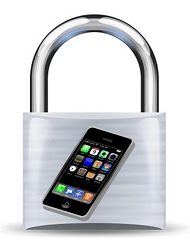Businesses that have bring your own device (BYOD) programs must protect themselves against this risk.
The mobile security risk that is created by the use of tablets and smartphones in businesses as a result of the use of third party apps has experienced a “monumental increase” according to the results of a recently published report.
What it showed as that these concerns have been steadily and considerably growing.
This is the case, said the report, even in the activation of enterprise apps that have greater mobile security complexity, particularly in terms of secure browsing. This information was published within the Q1 2014 Mobile Index Report that was issued by Good Technology. It also revealed that organizations are actually trying to take back control over their risks by leveraging enterprise apps that do provide greater protection.
The data for this mobile security report is gleaned from the activation tracking done by Good Technology.
That company has tracked activations over mobile devices and platforms and then leveraged its findings from over 5000 of its customers around the world. Within the report, it was explained that companies have called IT their leading concern for this year. Moreover, there has been a considerable 57 percent growth rate (quarter over quarter) in the activations of secure enterprise apps. This is an increase over 54 percent in the previous quarter and 43 percent in the one before that.
It was also underscored by Good Technology that these are “not surprising” results. The Ponemon Institute published the 2014 State of Endpoint Risk report which also placed the spotlight on risks connected with the use of mobile devices such as tablets and smartphones. It identified third party apps as the leading risk faced by business IT departments.
The Good Mobility Index Report indicated that the total number of activations of browsing apps with heightened mobile security throughout the customer base of Good Technology saw an unbelievable 2900 percent increase during this quarter. This brought it to the app category that is fifth most activated. In previous quarters, it hadn’t even made it into the top ten most activated lists.
Experts are saying that the popular photo sharing app is experiencing a lacking in privacy protection.
According to the complaints of a number of experts regarding the Snapchat app, the level of mobile security behind the application is greatly inadequate for protecting the privacy of its users.
Some now feel that the mobile app development team behind the app lacks the necessary understanding.
Among the most recent steps that the company has taken toward improving mobile security includes last week’s introduction of a CAPTCHA code verification. This is designed to help to ensure that all new subscribers are humans and not computer programs. It is important to avoid computer created accounts as these are common methods used by cybercriminals for the distribution of spam or to discover ways to grab personal information from other users of these types of mobile apps.
While the number of fake accounts may be reduced, it doesn’t mean that the mobile security is strong.
Although the CAPTCHA techniques can shrink the number of fake accounts that a service experiences, a graduate research assistant from the Georgia Institute of Technology, Steven Hickson, was able to easily hack into Snapchat despite its latest upgrades.
The CAPTCHA implementation at Snapchat was weak to the point that Hickson required under an hour on the mobile development of a computer program that would be able to trick the system with “100 percent accuracy”. Hickson explained that “They’re a very, very new company and I think they’re just lacking the personnel to do this kind of thing.”
In order to make sure that the potential user of the service is a human, the system selected by Snapchat involves having to choose the white ghost mascot of the company from among nine illustrations. Unfortunately, only the size and angle of the correct image is altered, making it simple for a computer to be able to recognize.
In order to stop a CAPTCHA mobile security system from being hacked, Hickson explained that “you want something that has a lot of variety in the answer,” adding that you essentially want one correct answer, but a vast array of different incorrect answers. This needs to be too complex for a computer to be able to solve while being quite obvious to a human.



